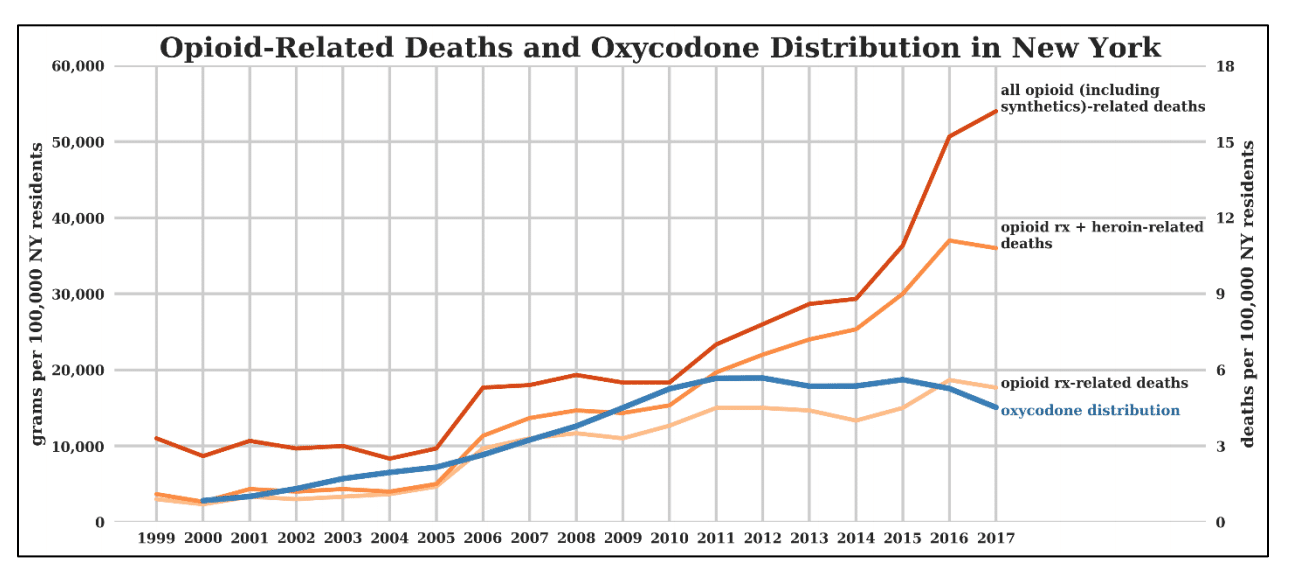Museums around the world, from New York City’s Guggenheim to London’s Tate Modern, have begun refusing donations from the Sackler family, owners of Purdue Pharma, the company that has become a publicly recognizable symbol for helping to fuel the opioid-involved overdose crisis.
On March 26, it was announced that Purdue settled a lawsuit by the state of Oklahoma—which alleged aggressive and deceptive marketing of Purdue’s drug, OxyContin—for $270 million.
Now the pressure on the Sacklers and others in the prescription opioid business has ramped up even more. On March 28, New York Attorney General Letitia James filed what her office has dubbed “the most extensive lawsuit against [opioid] manufacturers,” alleging that “the manufacturers engaged in false, deceptive marketing practices about the dangers of opioids, and that the distributors failed to exercise their basic duty to report suspicious behavior & continued to provide pharmacies with opioids.”
BREAKING: We’re filing the nation’s most comprehensive lawsuit against 6 opioid manufacturers, 4 distributors, & the Sackler family. pic.twitter.com/j211nzvUyT
— NY AG James (@NewYorkStateAG) March 28, 2019
The new lawsuit seeks damages for the “full range of economic injuries Defendants’ misconduct has inflicted on New York State.” This includes companies’ alleged violations of controlled-substance and consumer-protection laws—the latter of which, the complaint says, is exemplified by the industry’s “common ‘playbook’ to mislead the public about the safety, efficacy, and risks of their prescription opioids.”

Additionally, the Attorney General requests that the court void the licenses of defendants like Purdue Pharma, Johnson & Johnson and Janssen to manufacture or distribute controlled substances. The complaint alleges that such licenses were “improperly procured” in the first place.
“As the Sackler Family and the other defendants grew richer, New Yorkers’ health grew poorer and our state was left to foot the bill,” said AG James in a press release. In January 2019, documents surfaced in a Massachusetts lawsuit against Purdue that suggest the Sackler family was more complicit in the intentional manipulation of prescribers than previously thought.
“The manufacturers and distributors of opioids are to blame for this crisis and it is past time they take responsibility,” James stated.
A Purdue Pharma spokesperson told The New York Times that the company and its former directors “vigorously deny” the lawsuit’s “misleading allegations,” while a representative of the Sackler family characterized the lawsuit as “a misguided attempt to place blame where it does not belong for a complex public health crisis.”
Joshua D. Lee MD, MSc, a population health professor and director of the NYU Fellowship in Addiction Medicine, contends that “Opioid dependency and related overdoses are a public health crisis that must be tackled from every angle.”
And some harm reduction advocates are skeptical of the lawsuit’s relevance. “Guess what this lawsuit doesn’t do? Prevent any overdoses now,” tweeted journalist Zachary Siegel. “If that’s what AGs wanted to do, they’d deregulate buprenorphine and methadone, and also, while at it, deschedule heroin and hydromorphone so doctors can prescribe.”
In the past year, the national response to the opioid-involved overdose crisis has primarily fixated on reducing access to prescription drugs, rather than addressing entrenched social determinants. The approach has led to suffering and suicides among pain patients.
According to a study recently published in the Journal of the American Medical Association, overdose deaths related to illicit opioids will continue to skyrocket through 2025 under current conditions—primarily, the pervasive presence of fentanyl in the US heroin supply—though death rates associated with prescription opioids will stabilize.
In New York State, the opioid-involved overdose rate was nearly two times higher in 2016 for “opioid pain relievers”—which includes both illicit fentanyl and prescription drugs—than for heroin. The state’s Department of Health found that the rate of opioid prescribing consistently declined between 2013 and 2017.
Photograph: New York State Attorney General





Show Comments